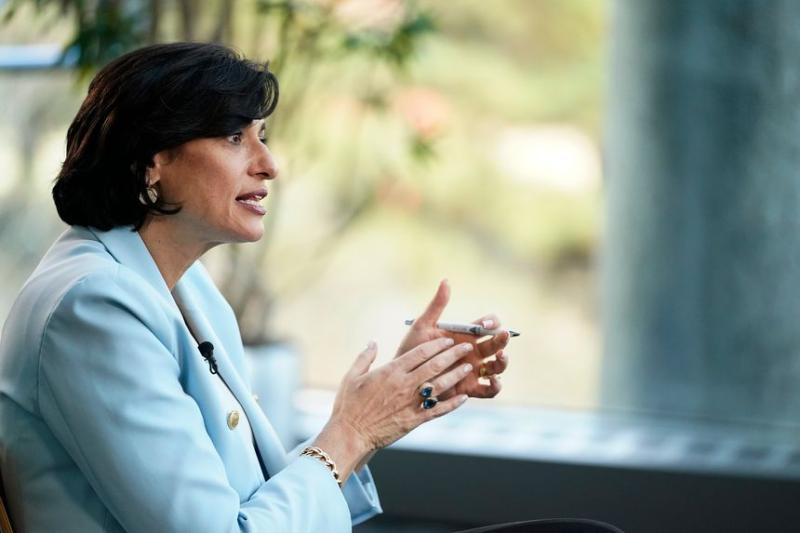CDC Director Aims to Improve Covid-19 Messaging, Data Collection - WSJ



One year into her tenure as director of the Centers for Disease Control and Prevention, Rochelle Walensky acknowledged that she hasn’t been clear enough with the American public.
She says the pandemic threw curveballs that she should have anticipated. She thinks she should have made it clearer to the public that new rules and guidelines were subject to change if the nature of the fight against Covid-19 shifted again.
“I think what I have not conveyed is the uncertainty in a lot of these situations,” Dr. Walensky said in an interview with The Wall Street Journal.
The CDC director has come under fire from public-health experts for the way she has communicated pandemic guidelines from mask wearing to isolation requirements. Some Biden administration officials said the CDC’s explanations of new and amended guidelines can sometimes be hard to grasp .
Dr. Walensky said she is committed to communicating CDC policy more clearly. She is being coached by a media consultant and plans to hold more media briefings in the coming months separate from her appearances with the White House Covid-19 Response Team. Some public-health experts have said such briefings would help highlight the CDC’s role as a scientific voice, independent of politics.
Recent changes to the CDC’s guidelines for people infected with Covid-19 were confusing and flawed, some public-health experts have said. The CDC on Dec. 27 cut in half the time infected persons need to isolate after testing positive, as long as they didn’t have symptoms or their symptoms had improved.
But ending isolation after five days without a negative Covid-19 test risked putting people who were still contagious back into contact with others, some public-health experts said. “It’s promoting the potential for more spread,” said Eric Topol, director of the Scripps Research Translational Institute in La Jolla, Calif.
The CDC on Jan. 4. updated the guidelines , adding new instructions for people who want to test before leaving isolation. However, the agency stopped short of saying that people should get a test before ending isolation, spurring more confusion.
Dr. Walensky said the isolation guidelines were based on more than 100 papers about the risks presented by variants including Alpha and Delta, drawing on research conducted before Omicron spread across the world .
“We felt the need to take action before we had Omicron-specific data,” she said. The recommendations also took into account reports from healthcare facilities and pharmacies whose staff were calling in sick and unable to work or dispense medications, she said.
The agency decided to add language about testing after it became clear to Dr. Walensky and other officials that people wanted guidance on using rapid tests to check whether they might still be infectious, she said. The CDC felt it needed to give people guidance on how to interpret such tests. Rapid tests authorized by the Food and Drug Administration weren’t intended for testing out of isolation, she said. Negative rapid tests are a better barometer of infectiousness when they are conducted repeatedly over several days, she said.
“If you’re positive—you should probably stay at home,” she said. “But a negative—that doesn’t mean you’re not contagious. And we needed to be very clear about that.”
Dr. Walensky said she intends to address gaps in national collection of public-health data. Unlike the U.K. or Israel , which have centralized health-data systems, the CDC gets data from state and local hospital systems and collection is often inconsistent and slow. Public-health experts have said a lack of data has hindered the response to the Delta and Omicron waves in the past year.
“We have decades of underinvestment in information systems,” said Tom Frieden, the CDC’s director from 2009 to 2017. Dr. Frieden is now president of Resolve to Save Lives, a nonprofit initiative that works on strengthening epidemic preparedness.
Dr. Walensky said she has the Biden administration’s support to broaden the CDC’s data-collection efforts. “We never had the resources that we do now to be able to do that,” she said.
Fewer than 200 health facilities across the U.S. had their electronic-health records linked to CDC data-collection systems before the pandemic, Dr. Walensky said. At the start of the pandemic, some states that were unable to electronically report positive Covid-19 cases had to fax PCR results to the CDC, she said. Some states were entering positive results first because they didn’t have the capacity to enter all the negative ones, she said, so the CDC initially received a skewed view of what fraction of the population was positive.
Tens of thousands of facilities have upgraded their electronic record-keeping during the pandemic, in part using federal funding, she said. There is still a long way to go, Dr. Walensky said. Modernizing public-health data infrastructure for the federal government and 3,050 state and local health departments would cost about $30 billion over 10 years, the nonprofit Healthcare Information and Management Systems Society said recently.
“This will not end with Covid,” Dr. Walensky said. “This is not a one and done effort.”



Messaging is a secondary problem. The main problem is politics.
First the CDC should not be taking cues from the Teacher's Union:
Second: They need to focus on treatment as much as the Biden doctrine of vaccines.
They need to be independent of the Biden gang.